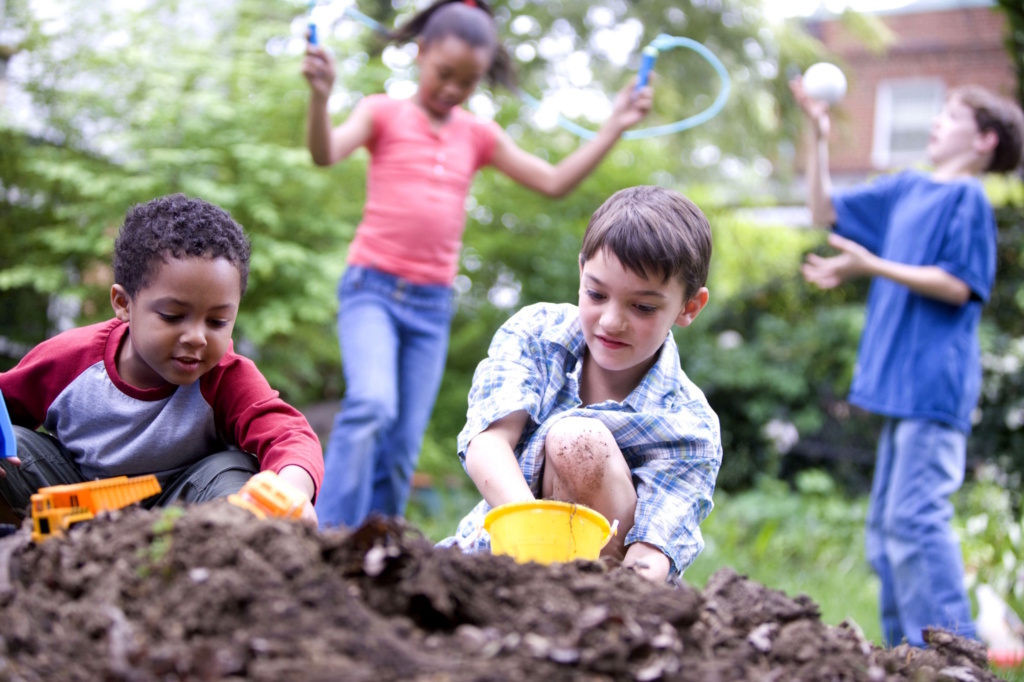
PURPOSE
To help children enjoy and appreciate the environment through their senses and in so doing to develop an appreciation of the richness of nature. To introduce children to ecological concepts such as ecosystem and food chain.
PREPARATION
Choose an area with trees, perhaps a wood, park or even the grounds of the school if it has trees. The activity can take place in any season, but autumn and winter will inspire very different responses to spring or summer.
Before the walk it would be useful if children understood the differences between our native broadleaved woodlands and the plantations of coniferous trees. If possible, children should visit or at least see photographs of both types of woodland so they can see the differences for themselves.
One of the key differences is the wildlife each type of woodland can support. A coniferous woodland supports very little wildlife, a broadleaved woodland has a complex woodland ecosystem that is illustrated in the next activity, “A Woodland Food Web’.
Each child needs a cardboard tube such as found in many household products, an empty half-dozen egg box and a small plastic cup or yoghurt pot.
PROCEDURE
Sight
Lead the children into the woodland or wooded space and ask them to stand and let their eyes wander over the landscape. This exercise is designed to help children stop and pay attention to what they see in a way we often overlook or ignore.
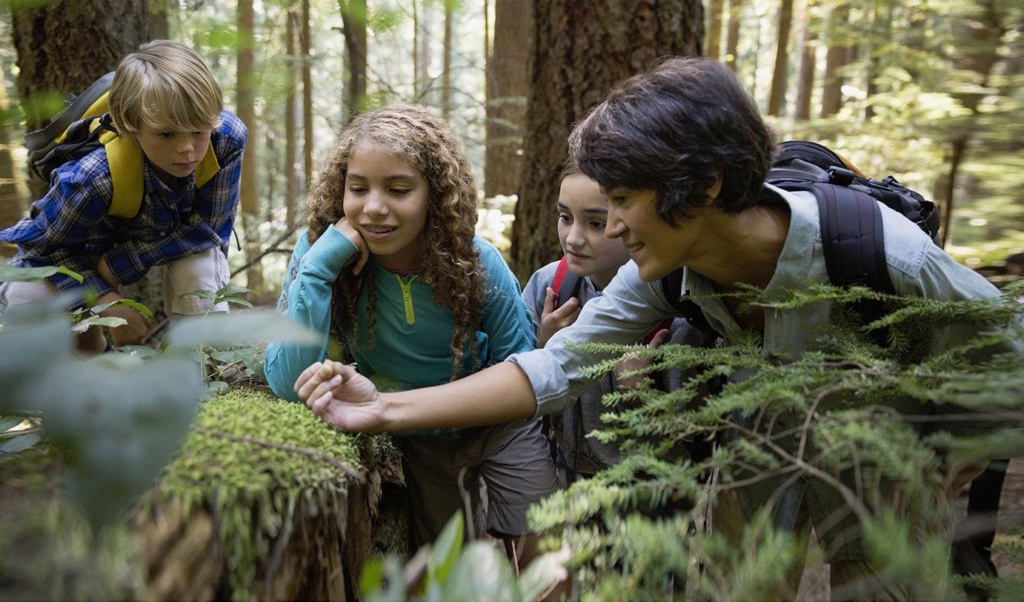
“Look down at your feet and point your index finger at them. Focus on one foot and notice your that your foot and your finger both have shape, edges, and colour. Follow your pointed finger up your body until you reach your nose and notice how you are now staring at your finger and see its shape, edges and colour again. Now point out in front of you, then drop your hand and carry on looking forward. Keep your head still and use your eyes to see how much of the horizon you can see – take in the whole horizon. Now turn your head to the left as far as you can go and move the eyes with you, then move the head back to the centre and to the right. How much more do you see than when you were focused on your foot or finger? ”
Hand out the cardboard tubes to each child.
“Focus on something on the horizon, a tree, a house, anything using your ‘telescope’.
Now switch back and look at the whole horizon… now the tube… focus on something else… do this several times.
Now pick up a leaf and look at it through your tube.
Has your leaf got a hole in it? Yes? Use the hole as a ‘telescope’ to scan the horizon with again. Does it look different from the cardboard tube?”
Ask the children to pair up and tell each other something about this experiment. What kinds of things did they notice? Are they surprised by how little they can see when they focus on their foot or finger and how much when they look at the horizon?
Smell
Gather everyone together in a circle before you begin this exercise.
“Now breathe in very deeply, try to count to ten, hold it for a few seconds then breathe out. Now do it again but this time notice the smells around you. We are smelling all the time and don’t know it.”
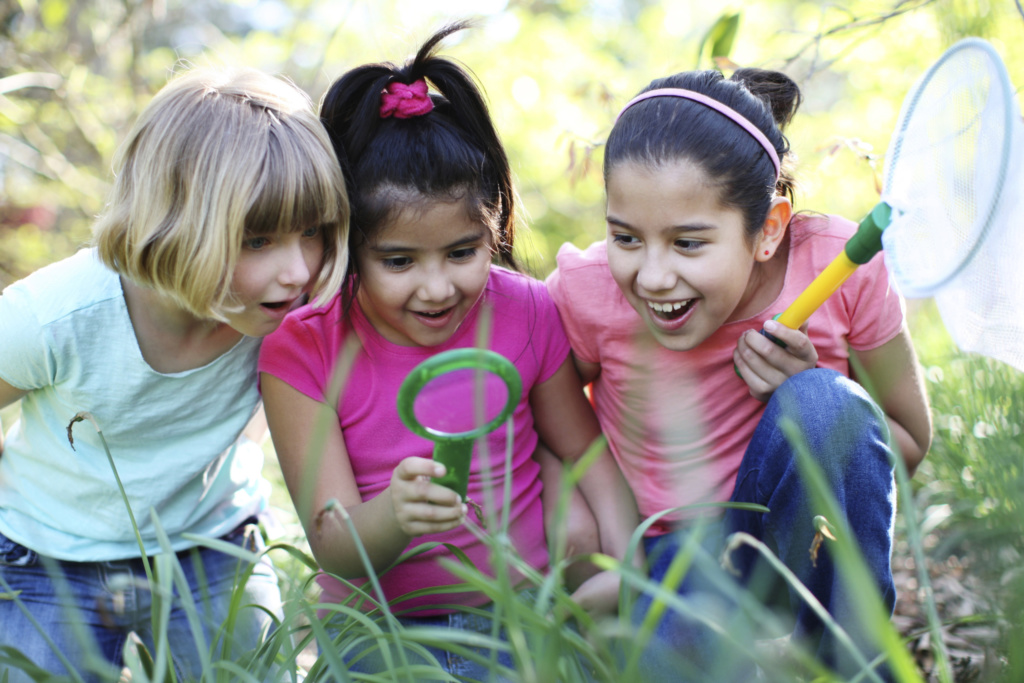
Give the children a small yoghurt pot or plastic cup each.
“In a minute I want you to go off and see how many smells you can find – collect your smells in your cup. It may be some earth, a leaf, a pine-cone, some wild fruit. Experiment and bring back your smelly cocktails to share with the group”.
Put children in pairs and get them to smell each other’s ‘cocktails’ – can they describe any of the smells?
Sound
After the children have brought back their cups of ‘smells’ gather them together, try and find somewhere dry to sit and ask them to close their eyes.
“Now remember the deep breathing? I want you to do it again. Take a deep breath and count up to ten in your mind slowly, then let the air out slowly with a big sigh.”
Demonstrate the breathing to the children.
“Now listen to the sounds behind you; block out all sounds in front of you and just concentrate on the sounds behind you.”
Allow the children 2-3 minutes to do this.
“Now focus on the sounds in front of you. What do you hear in front of you… block out all other sounds and concentrate on the sounds in front of you. Can you hear sounds near to you? What about sounds far away?”
Allow time for children to share their sound experiences with the group.
Touch
Give each child an egg box and whisper a different ‘touch’ word to each child: e.g. soft, hard, bumpy, smooth, rough, tickly, sticky, slimy, spiky, prickly, cold, warm, damp, dry, flat, fuzzy. Each child must go and find up to six items which correspond to their ‘touch’ word.
When they’ve all come back (allow about 10 minutes) sit them in a circle and ask them to pass their egg boxes around and by feeling the contents try to guess each one’s touch word.
Empathy
Ask each child to find a tree they like.
“Sit or stand far away from your tree so you can see the whole tree easily. Run your eyes slowly up… and … down the tree. Examine each branch and its leaves.
Look at the bark of the tree, let your eyes wander down the truck to the ground, notice the patterns and shapes in the bark.
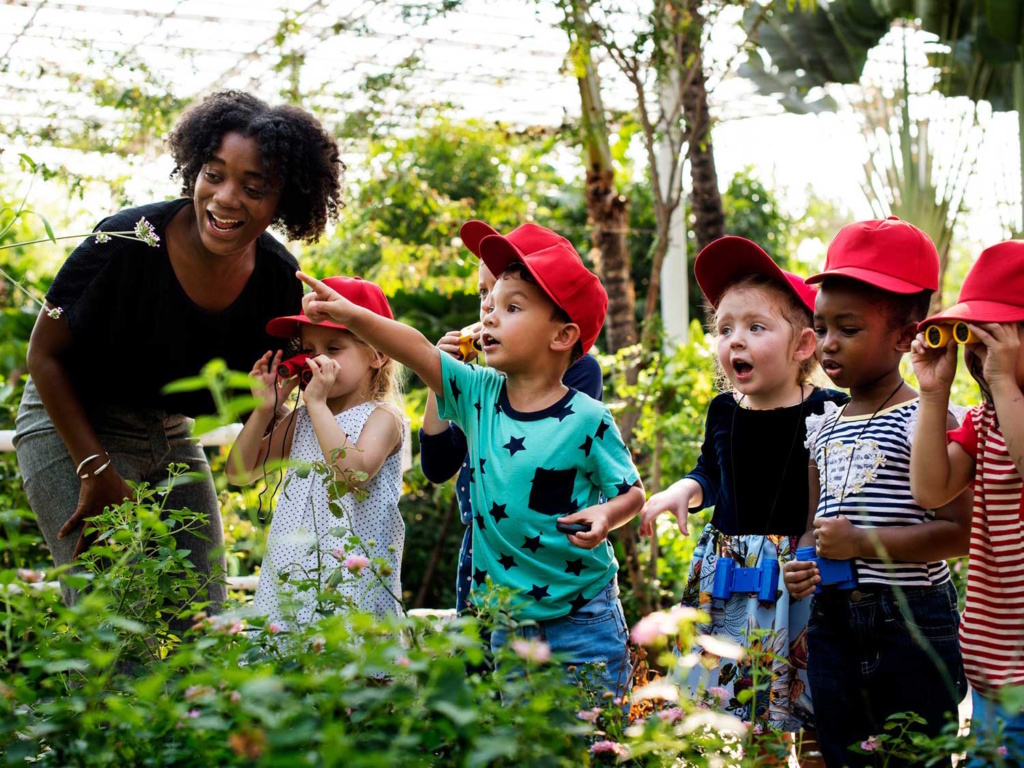
Now look at the shapes the tree makes between its branches, behind the leaves… Look at the shapes it makes between its branches. Focus back on the whole tree again.
Now move right up to your tree. Get to know it, hug it, put your arms right around it, smell it, listen to it, feel it, look closely at the bark, is there anything living on it?”
Ask the children to get together in pairs.
“Tell your friend what is special about your tree.”
Falling leaves
When leaves are thrown into the air and allowed to drift slowly to the ground, they make interesting shapes and patterns as they fall.
Demonstrate this to the children and then tell them to go and experiment with different leaves until they find one that makes a pattern they really like.
Ask them to bring it back and when all the children are together, ask each child to show the shapes his or her leaf makes as it falls to the ground.
Active Listening
At the end of the walk (you needn’t have gone very far) draw the children into a circle and tell them to pair off.
Each child then tells their partner what they liked best about the walk. Person A should talk briefly for 2-3 minutes, with B just listening attentively. Then B speaks and A listens.
Ask each child to report briefly to the whole group something their partner said about the walk. In this way each child gets an opportunity to talk to one other person about their feelings. This avoids any embarrassment about sharing feelings with a large group. It is also often easier to report back on what someone else has said, rather than on one’s own responses.
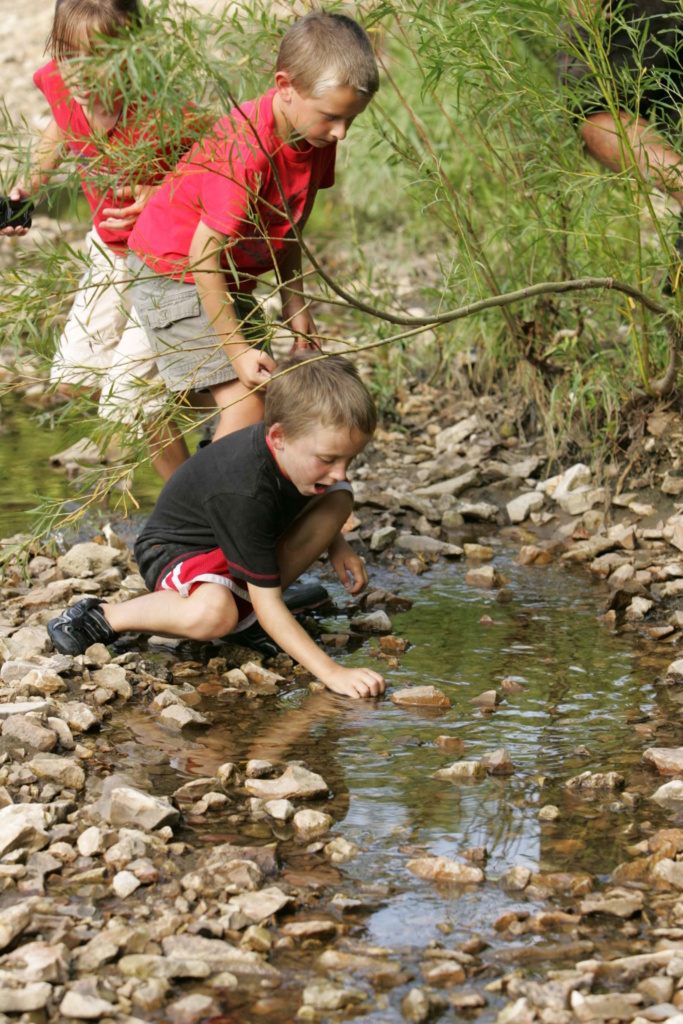
Before leaving the trees, if possible, collect one leaf for each child in the group and put all the leaves in a bag. Back in the classroom ask each child in turn to take a leaf from the bag. Ask them to close their eyes:
“With your eyes closed, feel your leaf very carefully. Pay attention to the texture, to any ridges or soft bits, hard bits…. (wait about 45 seconds) now open your eyes and look at your leaf very closely for a further minute. Smell your leaf.”
Collect all the leaves in the bag and ask the children to gather either in a circle on the carpet or round a table.
Empty the bag onto the carpet/table and ask the children to find ‘their’ leaf. This usually takes only seconds.
Ask the children to say how they recognised ‘their’ leaf.
It is always interesting to hear the imaginative ways children talk about their leaves; it is surprising what shapes or animals or things they have ‘seen’ in their leaf.
Once they have examined a leaf in detail so they can pick it out in a crowd they feel that somehow it ‘belongs’ to them. The children are often very attached to their leaf and want to keep it.
Aesthetic appreciation
Following this activity, you can secure children’s aesthetic understanding of the wonder of nature through art-work or creative writing. Children can make detailed drawings of their leaves, or impressionistic paintings or write a poem or creative prose about their leaves. Others may prefer to reflect on a single tree or the whole woodland.
Register for free
No Credit Card required
- Register for free
- Free TeachingTimes Report every month